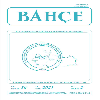MANTAR ÜRETİM TESİSLERİNDE ISI YALITIMI VE ISITMADA KULLANILAN ENERJİ KAYNAKLARININ KARŞILAŞTIRILMASI
THERMAL INSULATION IN MUSHROOM PRODUCTION ENTERPRISES AND COMPARISON OF ENERGY SOURCES USED IN HEATING
___
- 1. Anastaselos, D., Oxizidis, S., Papadopoulos, A.M., 2017. Suitable thermal insulation solutions for Mediterranean climatic conditions: a case study for four Greek cities. Energy Efficiency 10(5):1081-1098.
- 2. Anonim, 2019. Çeşitli yakıtlar için maliyet karşılaştırma çizelgesi (www.tesisat.com.tr; Erişim Tarihi: Şubat 2019).
- 3. Arslan, S., Darıcı, M., Karahan, Ç., 2001. Türkiye’nin jeotermal enerji potansiyeli. Enerji ve Jeoteknik Uygulamalar Sempozyumu, Ankara, 1:1-9.
- 4. Balaras, C.A., Droutsa, K., Argiriou, A.A., Asimakopoulos, D.N., 2000. Potential for energy conservation in apartment buildings. Energy and Buildings (31):143-154.
- 5. Baytorun, A.N., Önder, D., Gügercin, Ö., 2016. Seraların ısıtılmasında kullanılan fosil ve jeotermal enerji kaynaklarının karşılaştırılması. Türk Tarım-Gıda Bilim ve Teknoloji Dergisi 4(10):832-839.
- 6. Chang, S.T., Miles, P.G., 1989. Edible mushrooms and their cultivation. CRC Press Inc., Boca Raton, FL, USA.
- 7. Çomaklı, K., Yüksel, B., 2003. Optimum insulation thickness of external walls for energy saving. Appl. Therm. Eng. 23(4):473-9.
- 8. Çomaklı, K., Yüksel, B., 2004. Environmental impact of thermal insulation thickness in buildings. Appl. Therm. Eng. 24(5-6):933-40.
- 9. Darma, S., Harsoprayitno, S., Setiawan, B., Sukhyar, H.R., Soedibjo, A.W., Ganefianto N., Stimac, J., 2010. Geothermal energy update: Geothermal energy development and utilization in Indonesia. Proceedings World Geothermal Congress, 25-29.04.2010. Bali, Indonesia. 1:1-13.
- 10. Demir, H., Sönmez, İ., 2011. Antalya’nın Korkuteli ilçesinde kültür mantarı (Agaricus bisporus) yetiştiriciliğinin mevcut durumu, sorunları ve bazı çözüm önerileri. Uluslararası Katılımlı 1. Ali Numan Kıraç Tarım Kongresi ve Fuarı, 27-30.04.2011, Eskişehir, 3:2431-2439.
- 11. Deniz, U.M., Tütüncü, Ş., Eren, E., 2016. The problems detected in mushroom cultivation in Ankara. Turkish Journal of Agriculture-Food Science and Technology 4(3):182-188.
- 12. Dombaycı, O.A., 2007. The Environmental impact of optimum insulation thickness for external walls of buildings. Build Environment 42(11):3855-3859.
- 13. Eren, E., Öztekin, G.B., Tüzel, Y., 2016. Evaluation of medium and large-scale mushroom companies in Turkey. Turkish Journal of Agriculture Food Science and Technology 4(3):230-238.
- 14. Erkel, İ., 2004. Kocaeli ve çevresinde mantar üretim potansiyelinin saptanması. Türkiye 7. Yemeklik Mantar Kongresi, 22-24.09.2004, Antalya, 1:21-29.
- 15. Fadli, A.S., Susanto, H., Rahmadi, A., Dwikorianto, T., 2015. Direct application of steam geothermal for oyster mushroom (Pleurotus ostreatus) cultivation in Kamojang geothermal field, Indonesia. Proceedings World Geothermal Congress, 19-25.04.2015, Melbourne/Australia, 1:1-7.
- 16. Jang, K.Y., Jhune, C.S., Park, J.S., Cho, S.M., Weon, H.Y., Cheong, J.C., Choi, S.G., Sung, J.M., 2003. Characterization of fruit body morphology on various environmental conditions in Pleurotus ostreatus. Mycobiology 31(3):145-150.
- 17. Kurt, R., Can, A., Sivrikaya, H., 2018. The current status with the problems and some suggestions of mushroom cultivation in Bartin province. Journal of Bartin Faculty of Forestry 20(2):176-183.
- 18. Küçüktopçu, E., Cemek, B., 2018. A study on environmental impact of insulation thickness of poultry building walls. Energy (150):583-590.
- 19. Kwak, W.S., Jung, S.H., Kim, Y.I., 2008. Broiler litter supplementation improves storage and feed-nutritional value of sawdust-based spent mushroom substrate. Bioresource Technology 99:2947-2955.
- 20. Li, X., Pang, Y., Zhang, R., 2001. Compositional changes of cottonseed hull substrate during P. ostreatus growth and the effects on the feeding value of the spent substrate. Bioresource Technology 80(2):157-161.
- 21. Lomax, K.M., Collins, N.E., 1987. Energy requirements for Aguaricus bisporous production in bed culture. Developments in Crop Science (10):493-500.
- 22. Lund, J.W., Boyd, T.L., 2016. Direct utilization of geothermal energy 2015 worldwide review. Geothermics (60):66-93.
- 23. Medina, E., Paredes, C., Pérez-Murcia, M.D., Bustamante, M.A., Moral, R., 2009. Spent mushroom substrates as component of growing media for germination and growth of horticultural plants. Bioresource Technology (100):4227-4232.
- 24. Meng, L., Zhang, S., Gong, H., Zhang, X., Wu, C. Li, W., 2018. Improving sewage sludge composting by addition of spent mushroom substrate and sucrose. Bioresource Technology (253):197-203.
- 25. Mohsen M.S., Akash, B.A., 2001. Some prospects of energy savings in buildings. Energy conversion and management (42):1307-1315.
- 26. Rangel, M.E.R., 1998. Mushroom growing project at the Los Humeros, Mexico geothermal field. GeoHeat Center Quarterly Bulletin (19):14-16.
- 27. Robinson, B., Winans, K., Kendall, A., Dlott, J., Dlott, F., 2018. A life cycle assessment of Agaricus bisporus mushroom production in the USA. The International Journal of Life Cycle Assessment 24(3):456-467.
- 28. Schiau, H.G., Rus, F., 2013. Energy efficiency analysis of Agaricus bisporus mushroom produce in Feldioara-Brasov. 5. International Conference “Computational Mechanics and Virtual Engineering”, 24-25.10.2013, Romania, 416-422.
- 29. Van Peer, AF., Muller, W.H., Boekhout, T.L., Lugones, G., Wosten, H.A., 2009. Cytoplasmic continuity revisited: closure of septa of the filamentous fungus Schizophyllum commune in response to environmental conditions. PLoS One. 4(6):5977-5981.
- 30. Zhang, R.H., Duan, Z.Q., Li, Z.G., 2012. Use of spent mushroom substrate as growing media for tomato and cucumber seedlings. Pedosphere, 22(3):333-342.
- ISSN: 1300-8943
- Yayın Aralığı: 2
- Başlangıç: 1968
- Yayıncı: Atatürk Bahçe Kültürleri Merkez Araştırma Enstitüsü
BAZI BİTKİ PATOJENİ FUNGUSLARA KARŞI Humulus lupulus L. BİTKİ EKSTRAKTININ ANTİFUNGAL AKTİVİTESİ
Yusuf BAYAR, Melih YILAR, Abdurrahman ONARAN
FARKLI KİŞNİŞ (Coriandrum sativum L.) ÇEŞİT VE POPÜLASYONLARININ ANYON VE KATYON İÇERİKLERİ
DİYARBAKIR YÖRESİ CEVİZ (Junglans regia L.) GEN KAYNAKLARI
Koray ÖZRENK, Bahar YILMAZ, Ferit ÇELİK
SSR MARKÖR SİTEMİ KULLANARAK KAVUNLARDA SAFLIK DÜZEYLERİNİN TAHMİN EDİLMESİ
Önder TÜRKMEN, Necibe KAYAK, Ali Tevfik UNCU
İKLİM DEĞİŞİKLİĞİNİN TÜRKİYE SALIX TÜR DAĞILIMINA ETKİLERİ
Pelin ACAR, Nurbahar USTA BAYKAL
BAZI YENİ SOFRALIK ÜZÜM ÇEŞİTLERİNİN (Vitis vinifera) GÖZ VERİMLİLİKLERİNİN BELİRLENMESİ
BAZI CEVİZ ÇEŞİDİ TOHUMLARINDA, ÇİMLENME POTANSİYELİNİN BELİRLENMESİ
